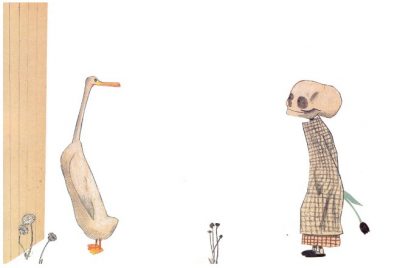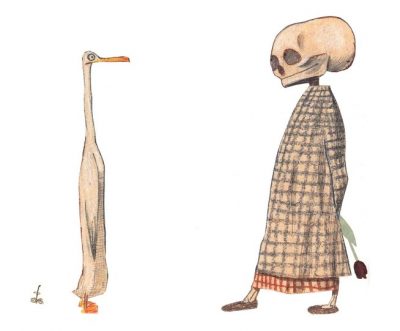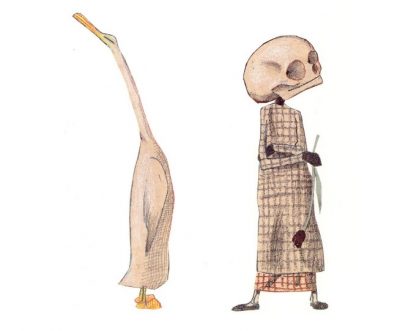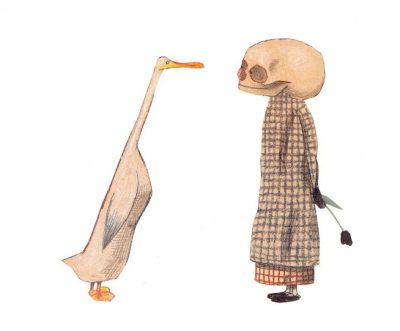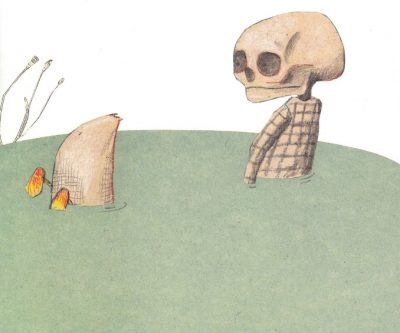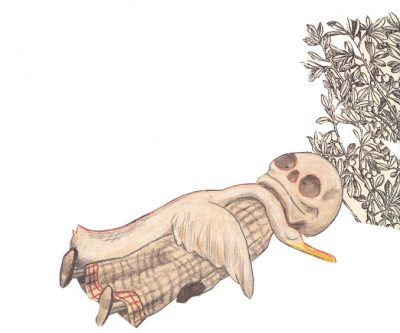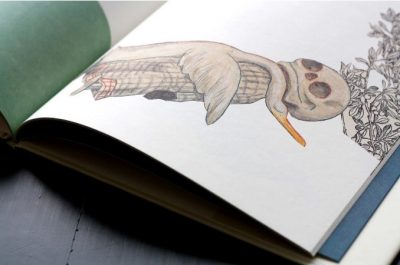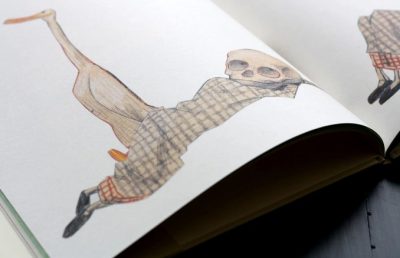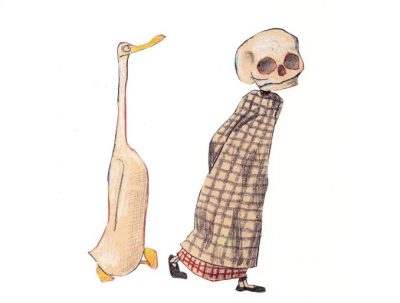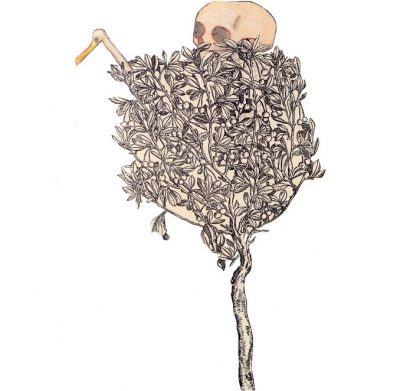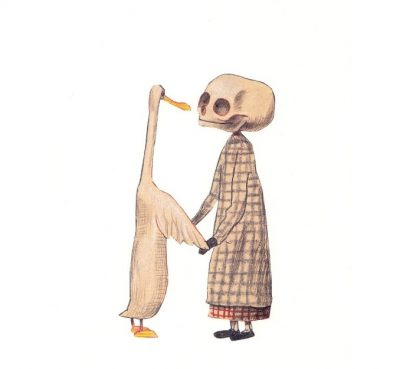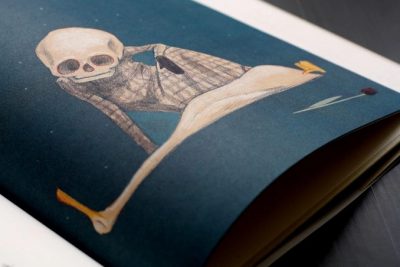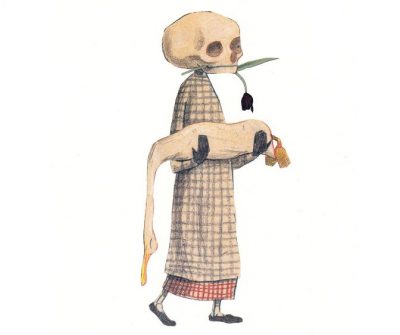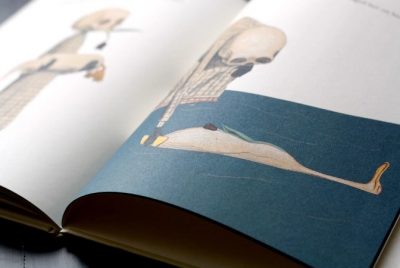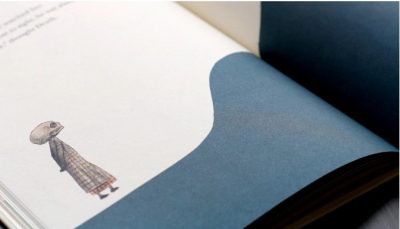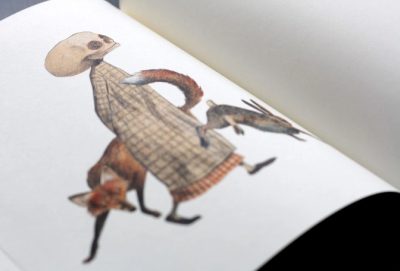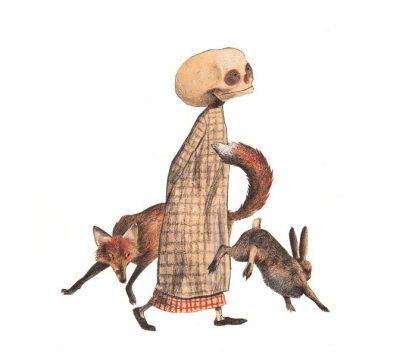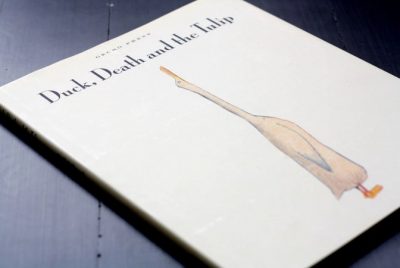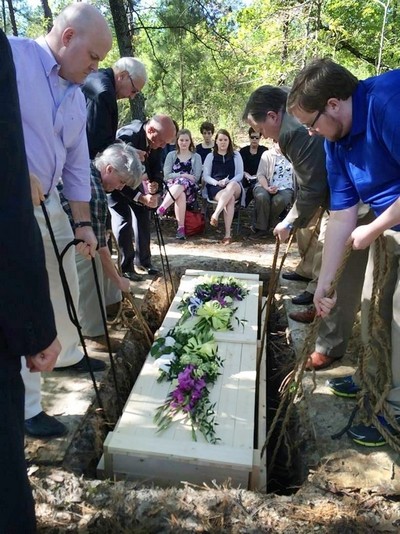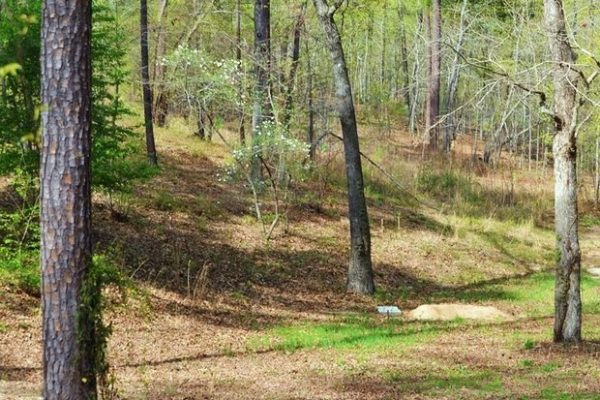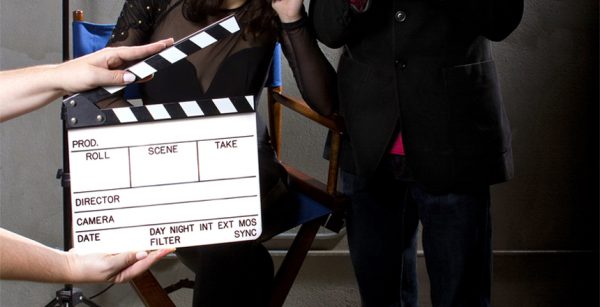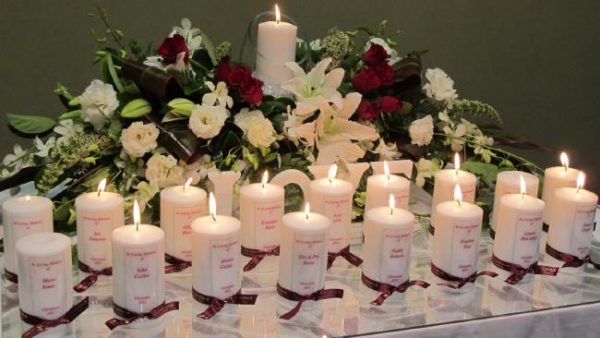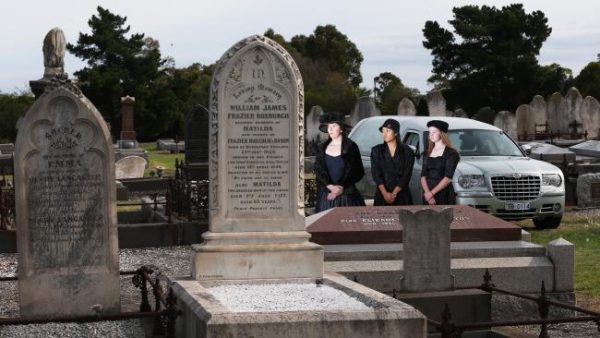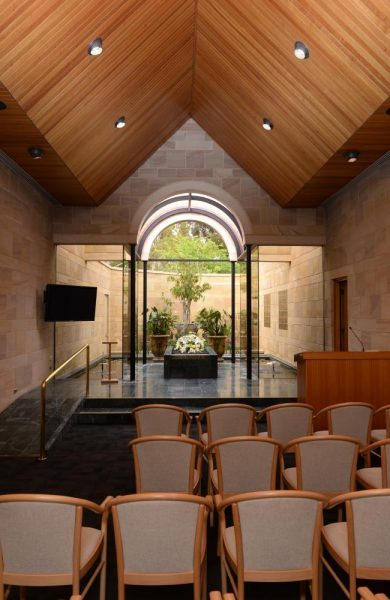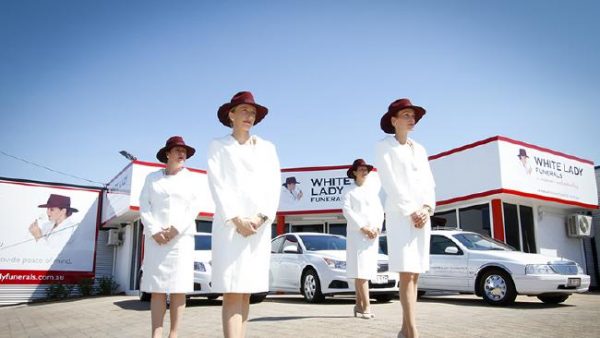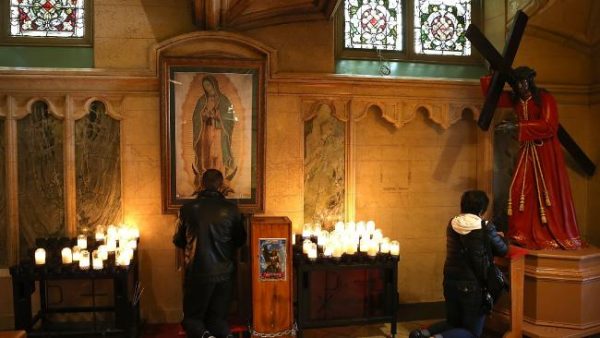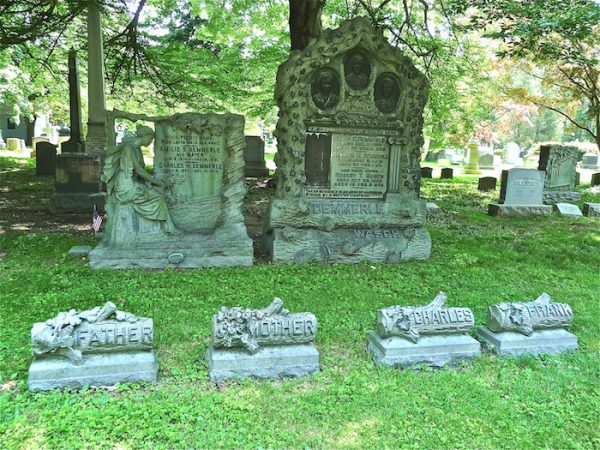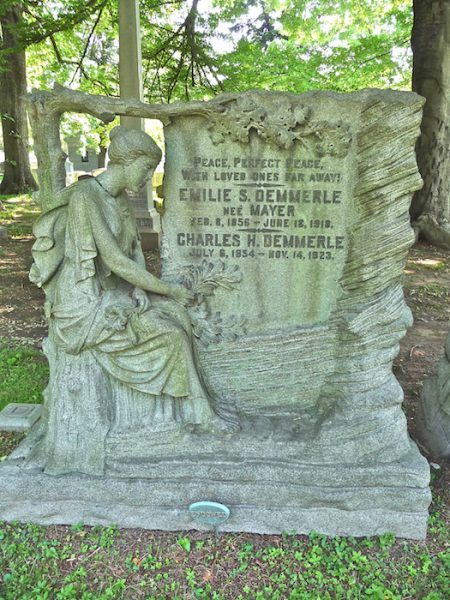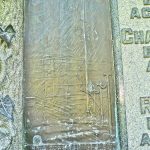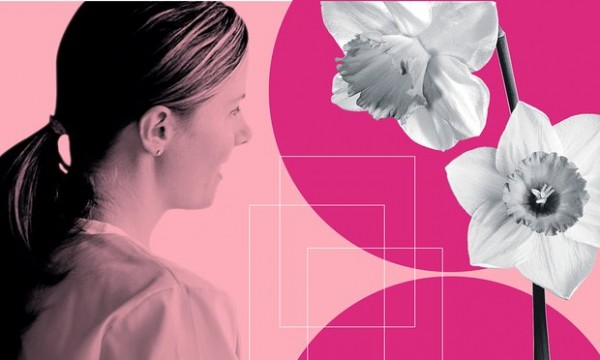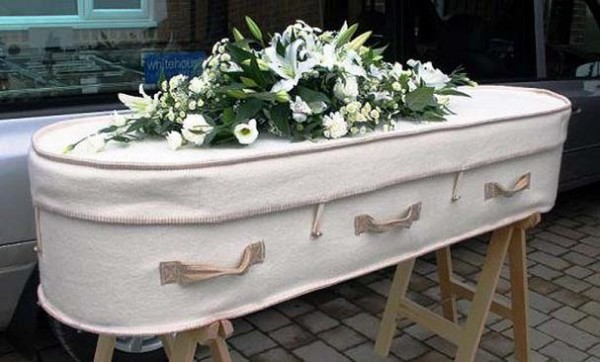“When you’re dead, the pond will be gone, too — at least for you.”
“Death is our friend precisely because it brings us into absolute and passionate presence with all that is here, that is natural, that is love,” Rilke wrote in contemplatinghow befriending our mortality can help us feel more alive. Nearly a century later, John Updike echoed this sentiment: “Each day, we wake slightly altered, and the person we were yesterday is dead. So why, one could say, be afraid of death, when death comes all the time?” And yet however poetic this notion might be, it remains one of the hardest for us to befriend and reconcile with our irrepressible impulse for aliveness. How, then, are those only just plunging into the lush river of life to confront the prospect of its flow’s cessation?
The German children’s book author and illustrator Wolf Erlbruch offers a wonderfully warm and assuring answer in Duck, Death and the Tulip (public library) — a marvelous addition to the handful of intelligent and imaginative children’s books about death and loss.
One day, Duck turns around to find Death standing behind her. Terrified, she asks whether he has come to take her, but he remarks rather matter-of-factly that he has been there her entire life.
At first chilled by the notion of Death’s lifelong proximity, Duck slowly, cautiously, curiously acquaints herself with him.
Death gave her a friendly smile.
Actually he was nice (if you forgot for a moment who he was).
Really quite nice.
With great economy of words and minimalist yet enormously expressive illustrations, Erlbruch conveys the quiet ease that develops between the two as they relax into an unlikely camaraderie.
Duck suggests they go to the pond together, and although Death has always dreaded that, he reluctantly agrees. But the water is too much for him.
“Are you cold?” Duck asked. “Shall I warm you a little?”
Nobody had ever offered to do that for Death.
They awake together in the morning and Duck is overjoyed to discover that she is not dead. Here, Erlbruch injects the lightheartedness always necessary for keeping the profound from slipping into the overly sentimental:
She poked Death in the ribs. “I’m not dead!” she quacked, utterly delighted.
“I’m pleased for you,” Death said, stretching.
“And if I’d died?”
“Then I wouldn’t have been able to sleep in,” Death yawned.
That wasn’t a nice thing to say, thought Duck.
But since any friendship is woven of “a continued, mutual forgiveness,” Duck eventually metabolizes her hurt feelings and the two find their way into a conversation about the common mythologies of the afterlife central to our human delusion of immortality:
“Some ducks say you become an angel and sit on a cloud, looking over the earth.”
“Quite possibly.” Death rose to his feet. “You have the wings already.”
“Some ducks say that deep in the earth there’s a place where you’ll be roasted if you haven’t been good.”
“You ducks come up with some amazing stories, but who knows.”
“So you don’t know either,” Duck snapped.
Death just looked at her.
Having failed to resolve the existential perplexity of nonexistence, they return to the simple satisfactions of living and decide to climb a tree.
They could see the pond far below. There it lay. So still. And so lonely.
“That’s what it will be like when I’m dead,” Duck thought. “The pond alone, without me.”
Death sometimes read minds. “When you’re dead, the pond will be gone, too — at least for you.”
“Are you sure?” Duck was astonished.
“As sure as can be,” Death said.
“That’s a comfort. I won’t have to mourn over it when…”
“…when you’re dead.” Death finished the sentence. He wasn’t coy about the subject.
As summer winds down, the two friends visit the pond less and less, and sit quietly in the grass together more and more. When autumn arrives, Duck feels the chill in her feathers for the first time, perhaps in the way that one suddenly feels old one day — the unannounced arrival of a chilling new awareness of one’s finitude, wedged between an unredeemable yesterday and an inevitable tomorrow.
“I’m cold,” she said one evening. “Will you warm me a little?”
Snowflakes drifted down.
Something had happened. Death looked at the duck.
She’d stopped breathing. She lay quite still.
Stroking her disheveled feathers back into a temporary perfection, Death picks Duck up and carries her tenderly to the river, then lays her on the water and releases her into its unstoppable flow, watching wistfully as she floats away. It’s the visual counterpart to that unforgettable line from Elizabeth Alexander’s sublime memoir:“Perhaps tragedies are only tragedies in the presence of love, which confers meaning to loss.”
For a long time he watched her.
When she was lost to sight, he was almost a little moved.
“But that’s life,” thought Death.
As the river spills off the book and we turn to the last page, we see Death surrounded by other animals — a subtle reminder that he will escort the fox and the rabbit and you and me down the river of life, just as he did Duck. And perhaps that’s okay.
Complement the immeasurably beautiful and poetic Duck, Death and the Tulip with the Danish masterpiece Cry, Heart, But Never Break and Oliver Jeffers’s The Heart and the Bottle, then revisit a Zen master’s explanation of death and the life-force to a child.
Complete Article HERE!

